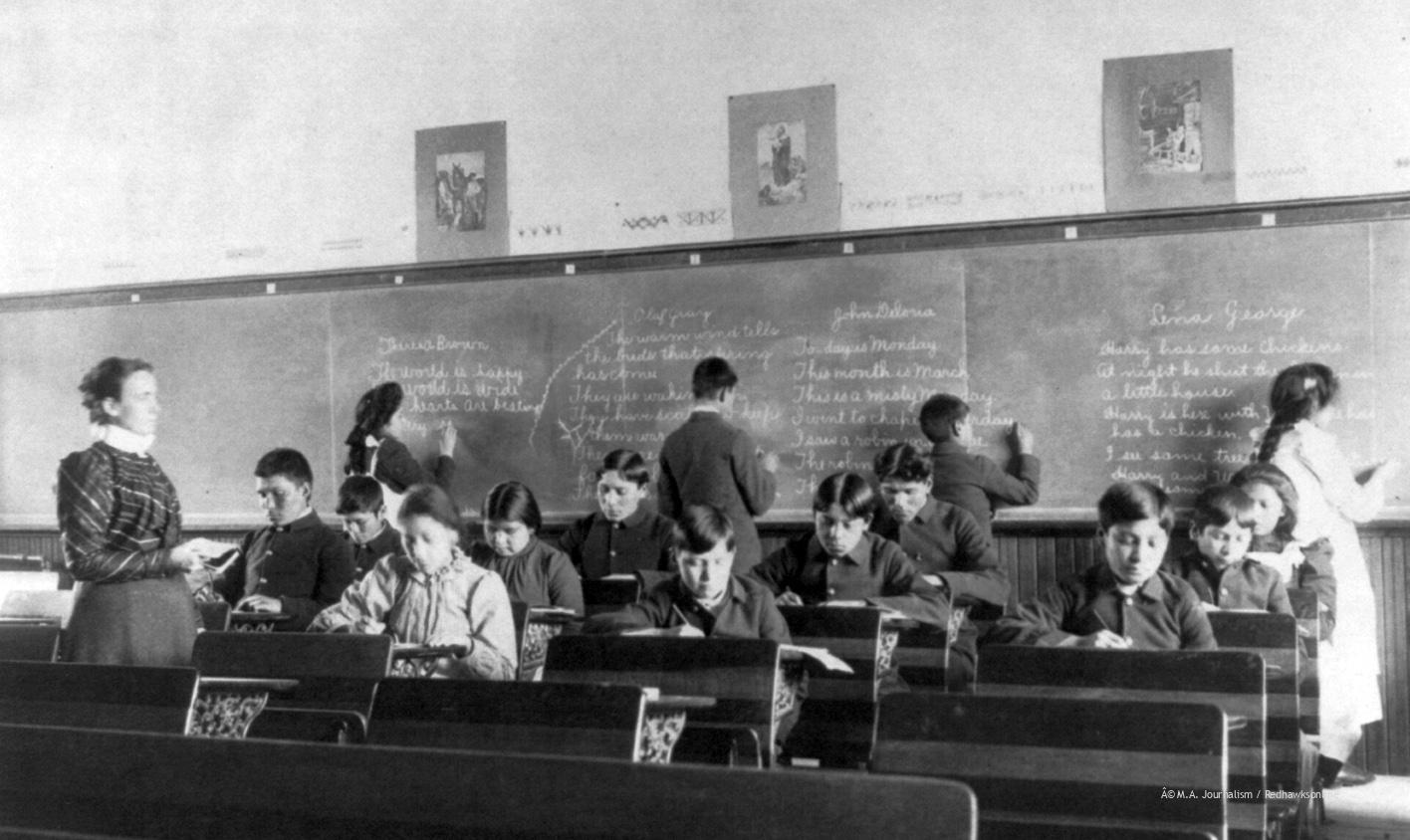Government and Church run boarding schools horrific history
Less than 100 years ago in the turbulent 1930s a child was taken from his family and forced to attend a boarding school in South Dakota. This school (as well as more than 500 others which operated in the United States) had a singular goal: Forced and violent assimilation.
Taken from his home, family, and everything he knew, this boy’s school experience had only just begun. His head was shaved and gasoline was poured across his body.
“I guess in essence [it was] to clean him,” said Deidre Whiteman, the granddaughter of this boy, “But I just can’t imagine being bathed in gasoline [or] thinking that that’s a solution to clean someone.”
Unfortunately, like the other 60,889 children in boarding schools by 1925, according to the Native American Boarding School Healing Coalition in Minneapolis, where Whiteman is director of research and education, the impact of this boy’s years at an abusive, government-funded boarding school had a lasting influence on him. Beatings and other abuse impacted him for the rest of his life.
“I know personally, how it’s affected our family,” said Whiteman, “and it’s not been a good experience. We’re still trying to recover from those time periods.”
Many children lost their lives at these schools and were buried in unmarked- and sometimes mass-graves. An effort is now being made to locate the graves of children who died while at these schools and the numbers of children found continue to rise. After more than 200 children were found in a mass grave on a former boarding school’s property in Canada, students at the University of Minnesota Morris (formerly a Catholic-run boarding school) petitioned for their school grounds to be searched for potential burial sites after finding records that suggested students had died while at- tending the boarding school at this location, the Star Tribune reported.
Church-run schools
A Roman Catholic church towers over boarding school buildings in Red Lake, Minnesota, around the year 1900. A major part of the forced boarding school
experience for Native Americans was attending church services. Minnesota had 16 boarding schools, with students coming from all 11 of the state’s reservations. Children as young as four were abducted from their homes by government agents and sent to these schools beginning about 1870. By the 1970s, most had closed.
These Native American boarding schools operated from 1869 through the 1960s. The generational trauma has impacted Native communities in nearly every area of their existence.
“Native American students…had the lowest graduating class amongst all minorities in the United States,” said Whiteman.
Children who were abducted and raised in boarding schools struggled later as parents to raise their own children, as did their children after them.
“We held our children to the highest esteem as we could,” said Whiteman, “because we knew that they were our future, and we depended on our children…. They were going to lead us into the next generation…. Now we look at the communities today, and a lot of children are suffering because of lack of parenting, lack of housing.”
The boarding schools worked tirelessly to sever students’ connections with their languages and cultures. Because of this, many people grew up not knowing the languages of their ancestors and are now working to reconnect to this piece of their heritage.
“I should be able to speak to you in my Dakota language,” said Whiteman. “But…I’m still learning [it], and that’s part of that healing process.”
Studying English
Students at the Carlisle Indian Industrial School, in Carlisle, Pennsylvania, learn
English and penmanship around 1901. Founded in 1879, Carlisle was one of the
most influential boarding schools forcing assimilation on Native American children.
Its superintendent, Brig. Gen. Richard Henry Pratt, claimed that the purpose of the
schools was to “kill the Indian … save the man.” Students were harshly punished
for using their native languages. When they arrived at a boarding school, often
after being abducted from their homes by government agents, students were given
haircuts and forced to wear American-style clothing.
Although this piece of American history is not included in many history books, or discussed in much detail, it has impacted the lives of hundreds of thousands of people. Many people today dedicate their time to continuing to preserve Native languages and culture that the boarding schools attempted to destroy.
“We strongly believe that our language ties us to everything,” said Whiteman. “[It] ties us to our community and ties us to the land. Our songs are thousands of years old and they’re all in our language…for us that’s really the healing piece. And that’s just one part.”

